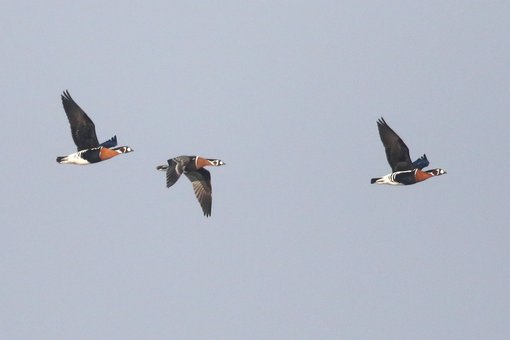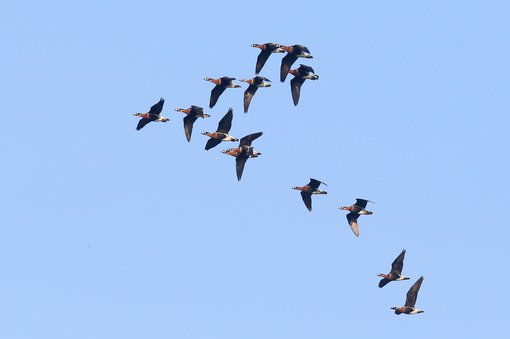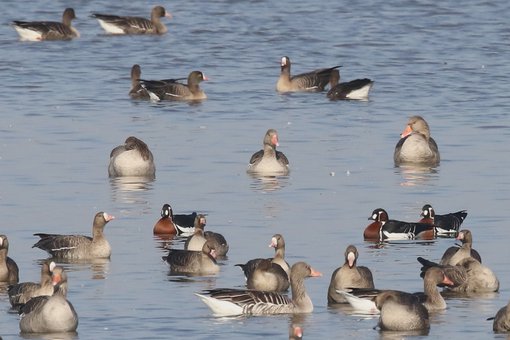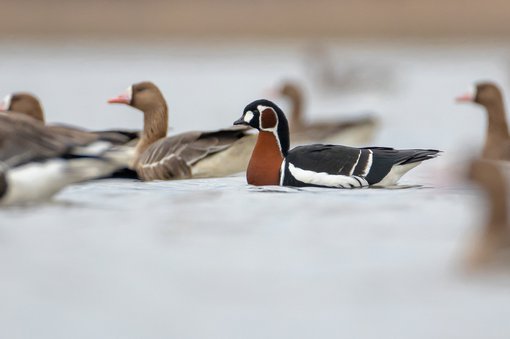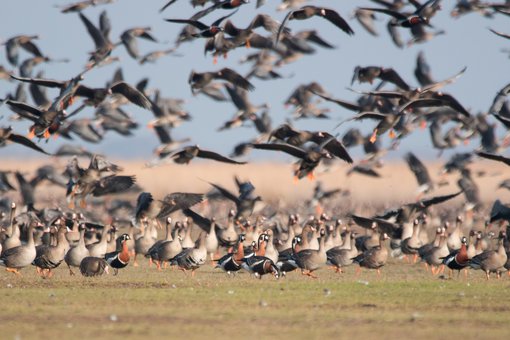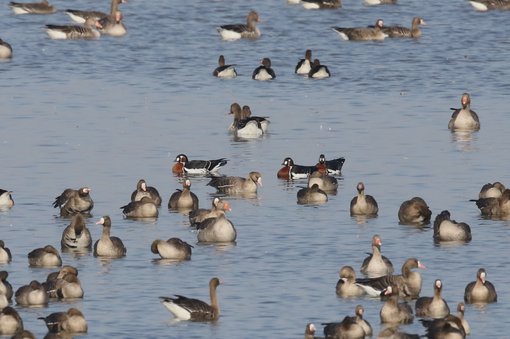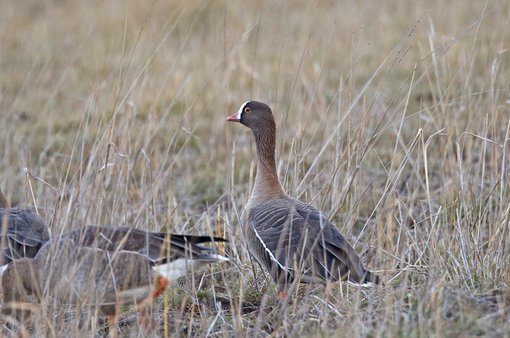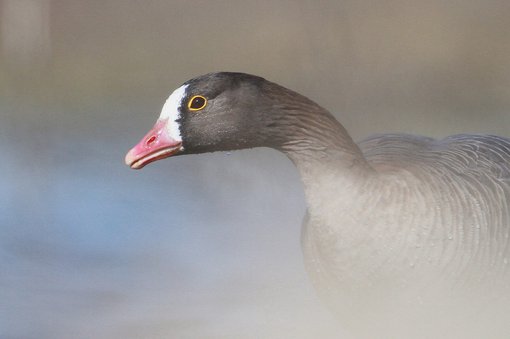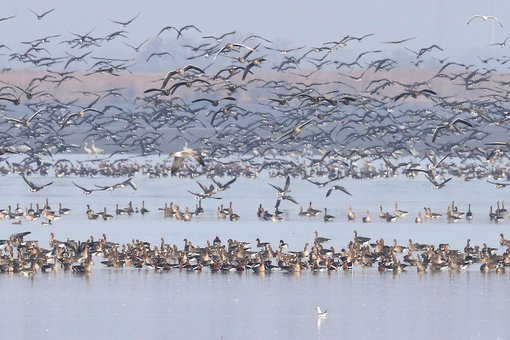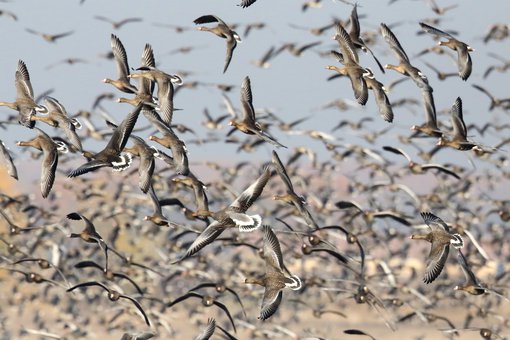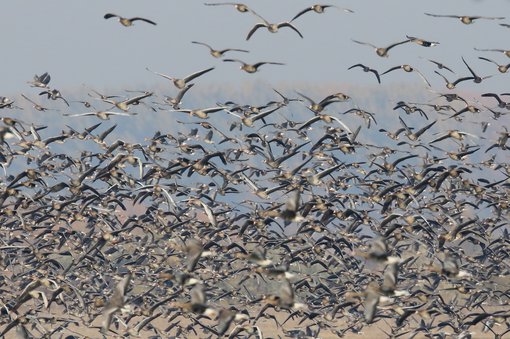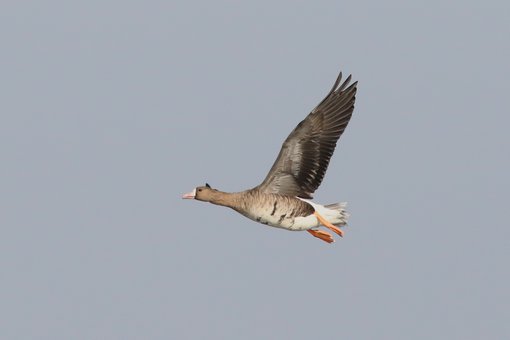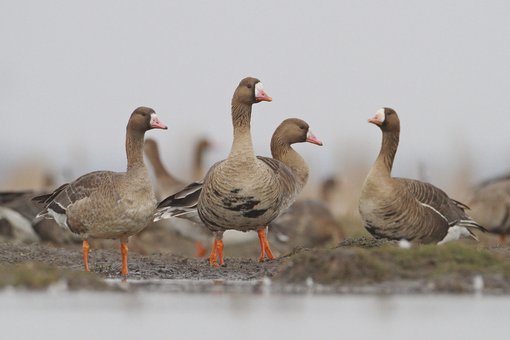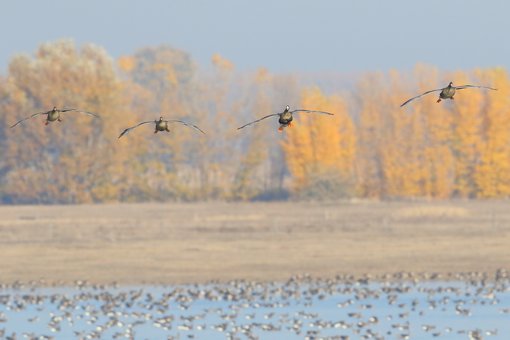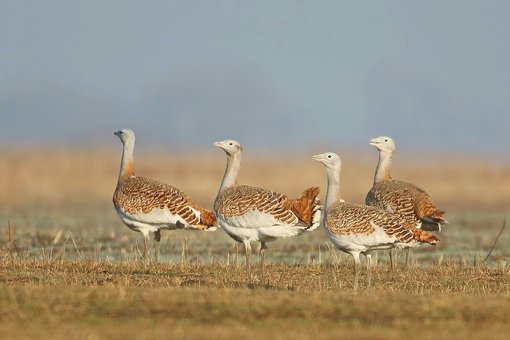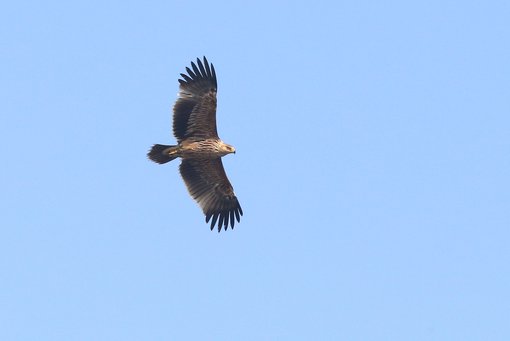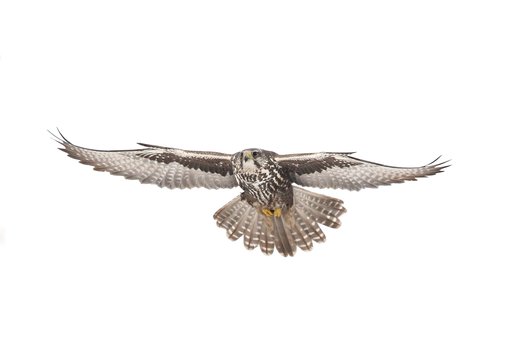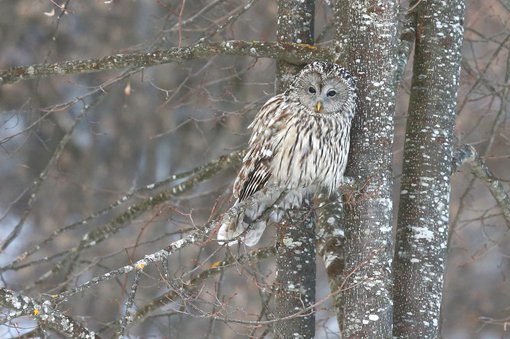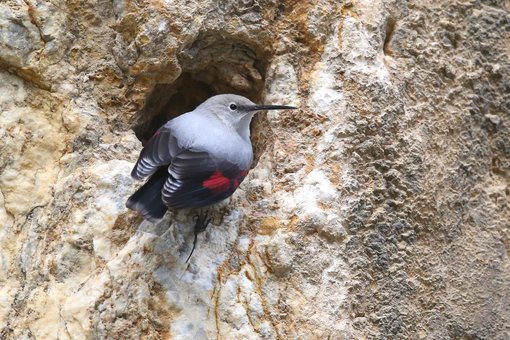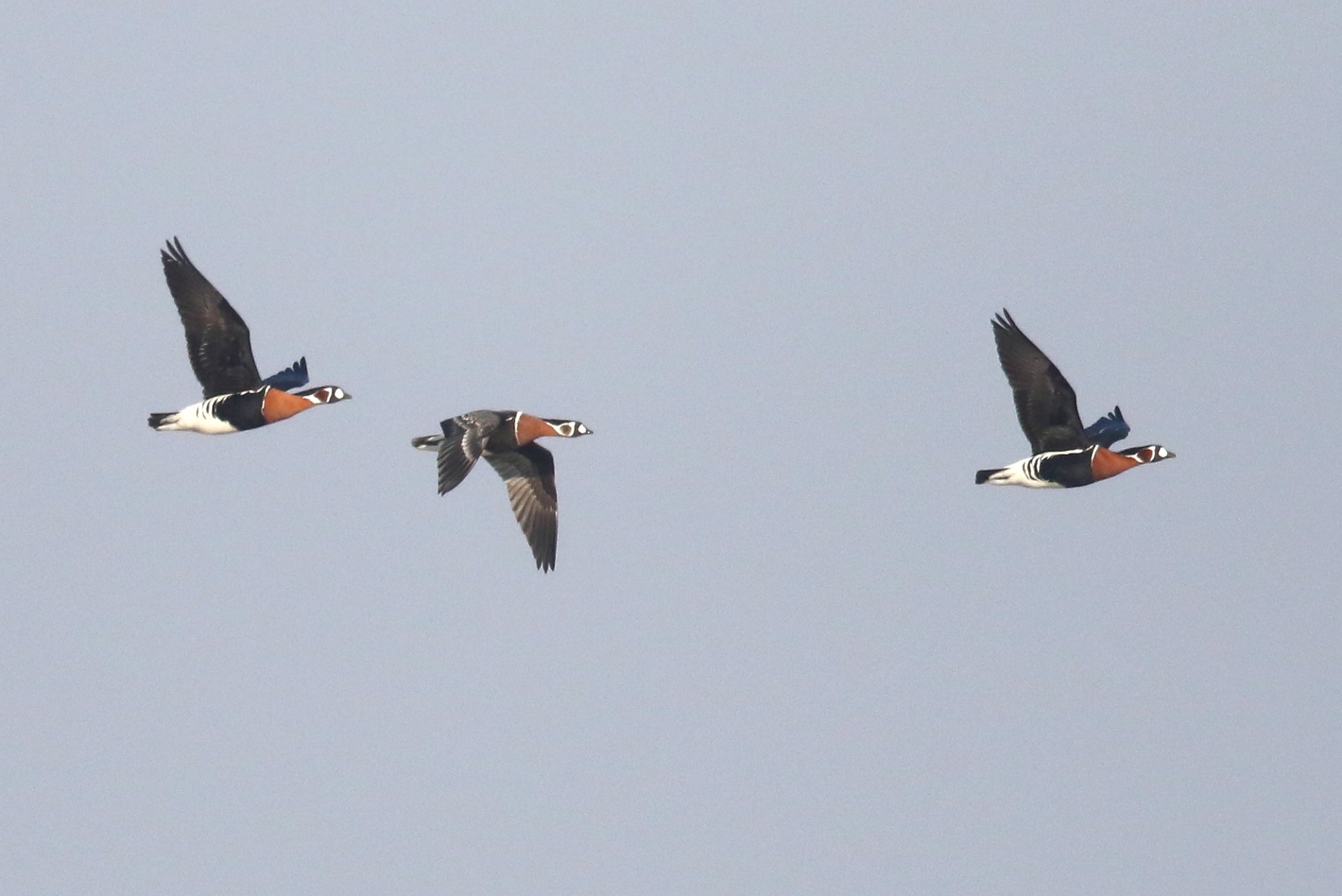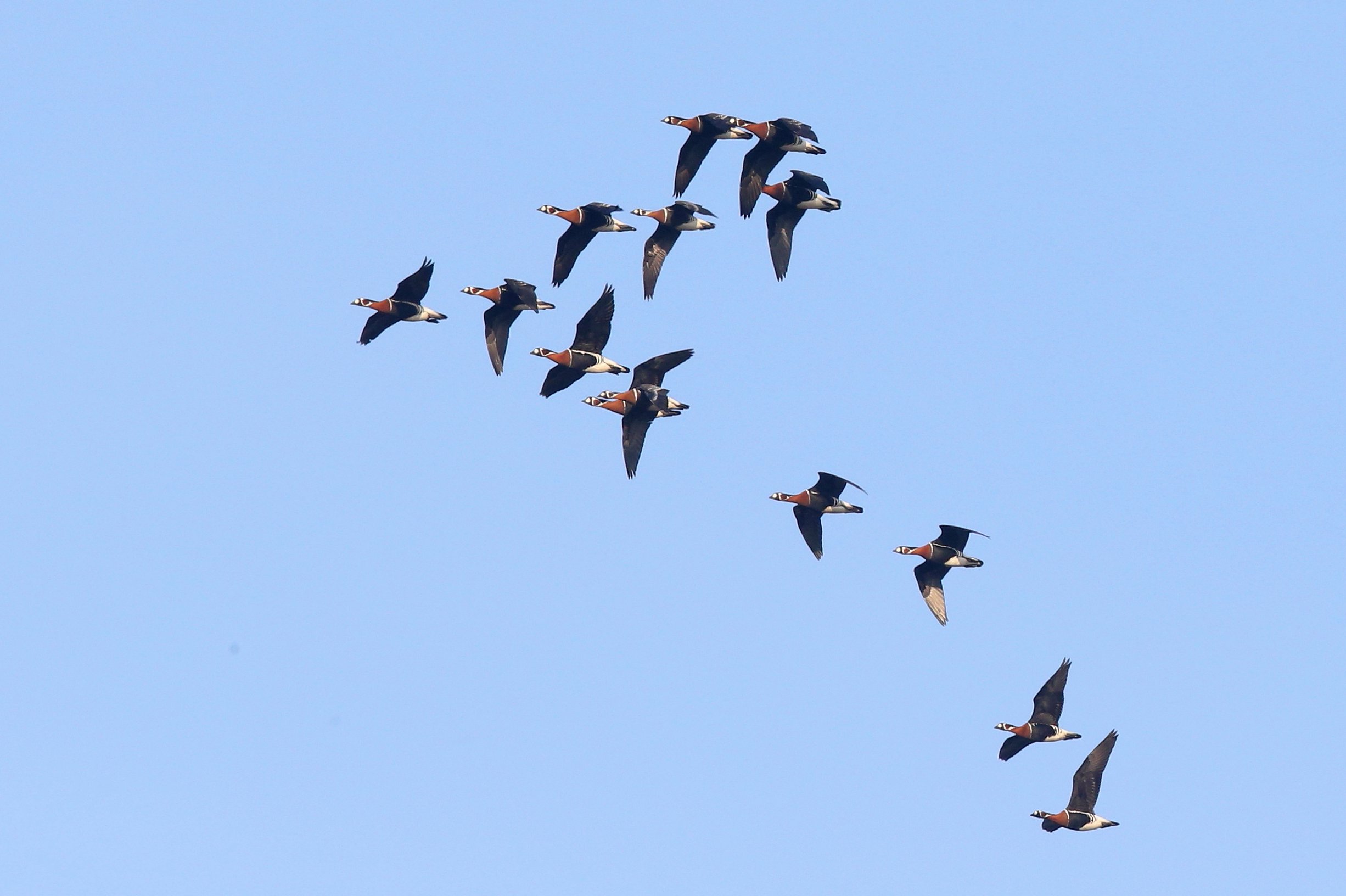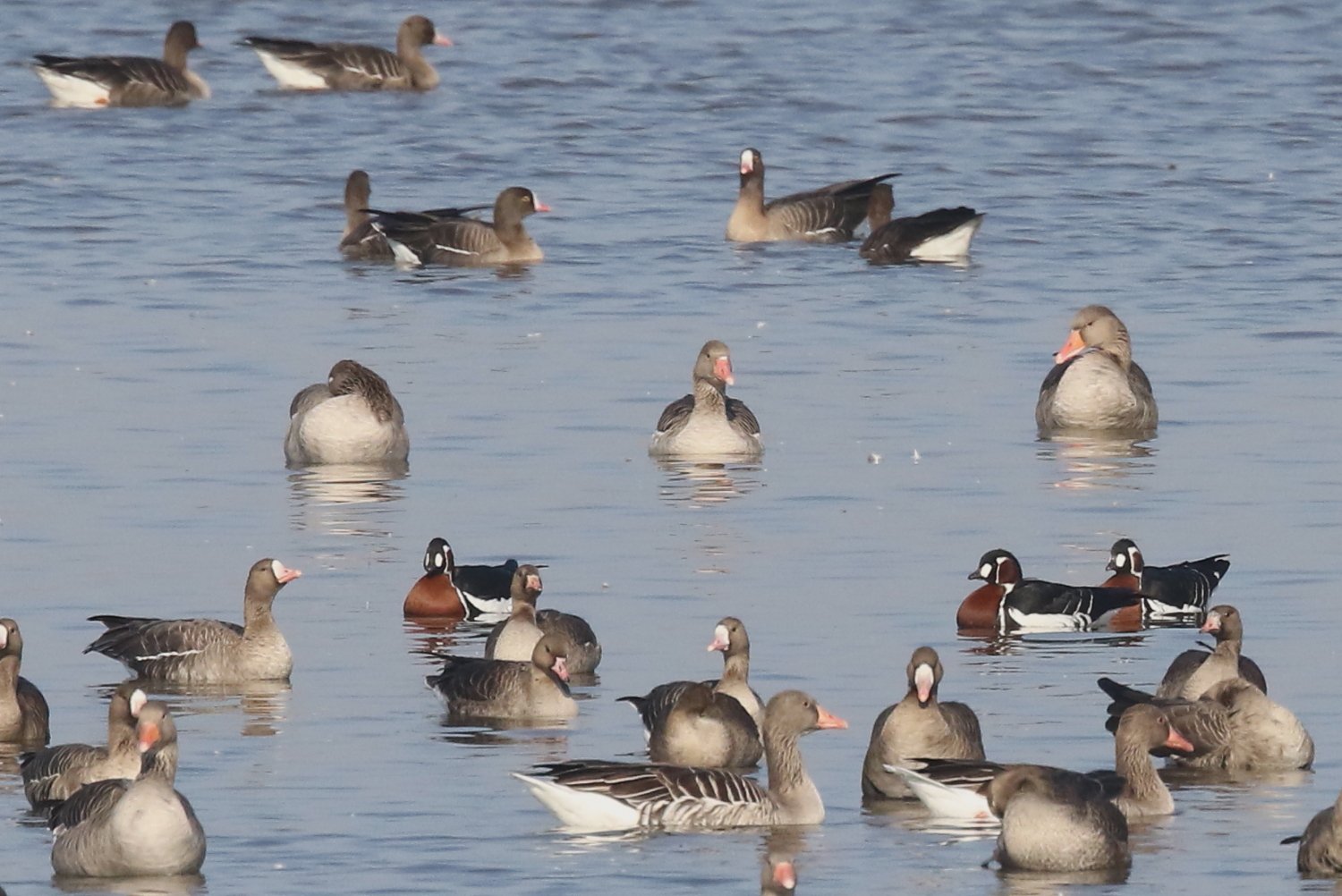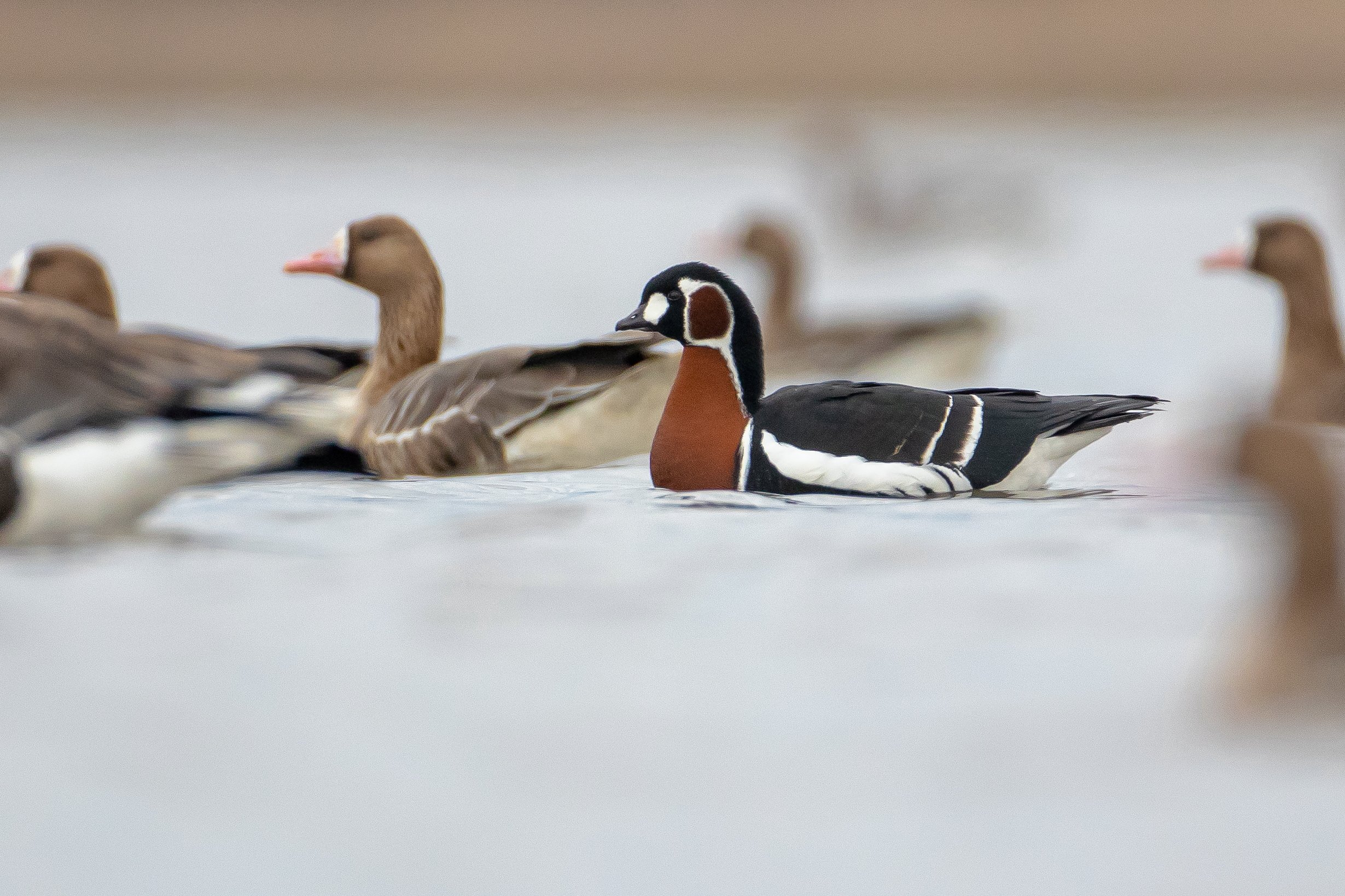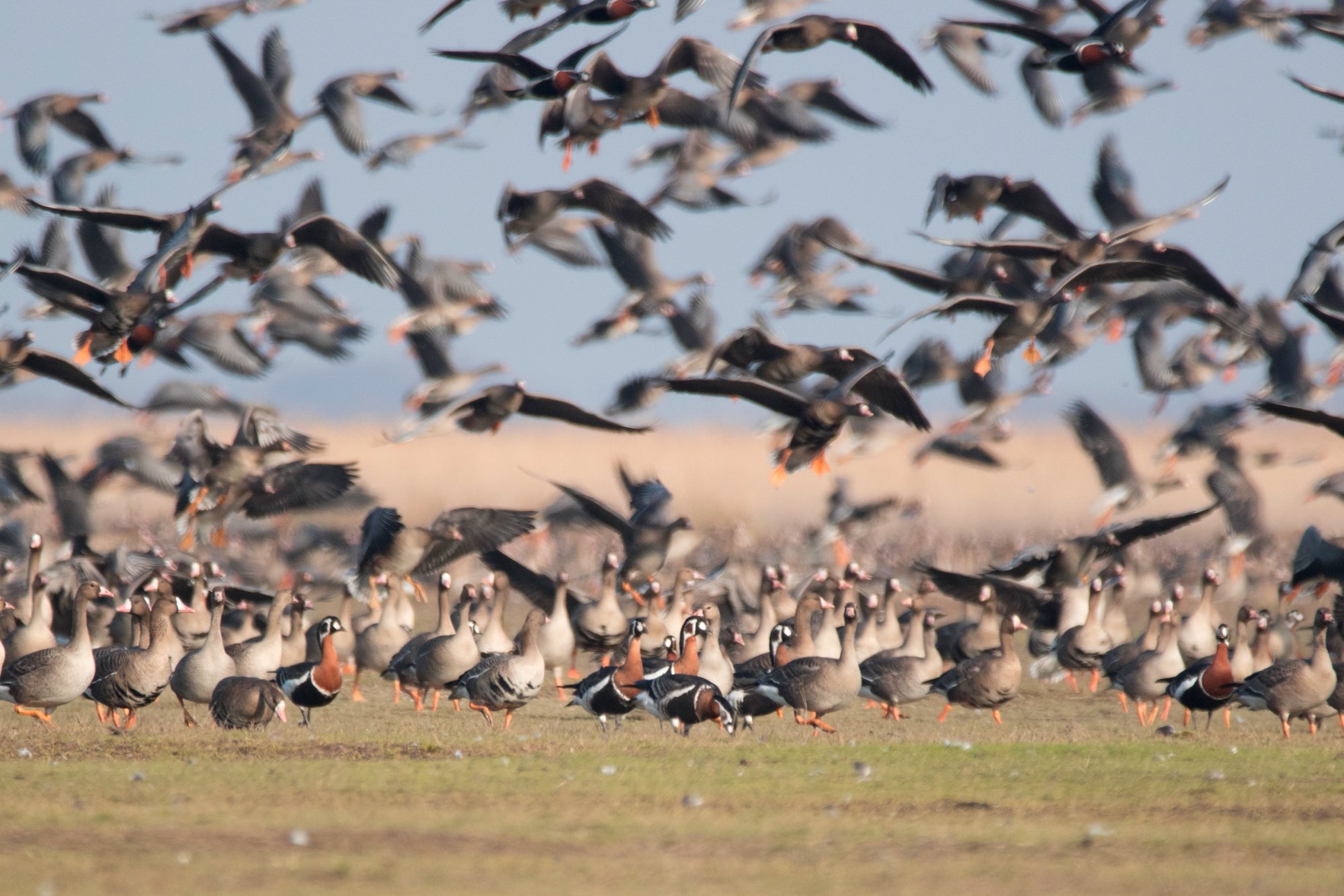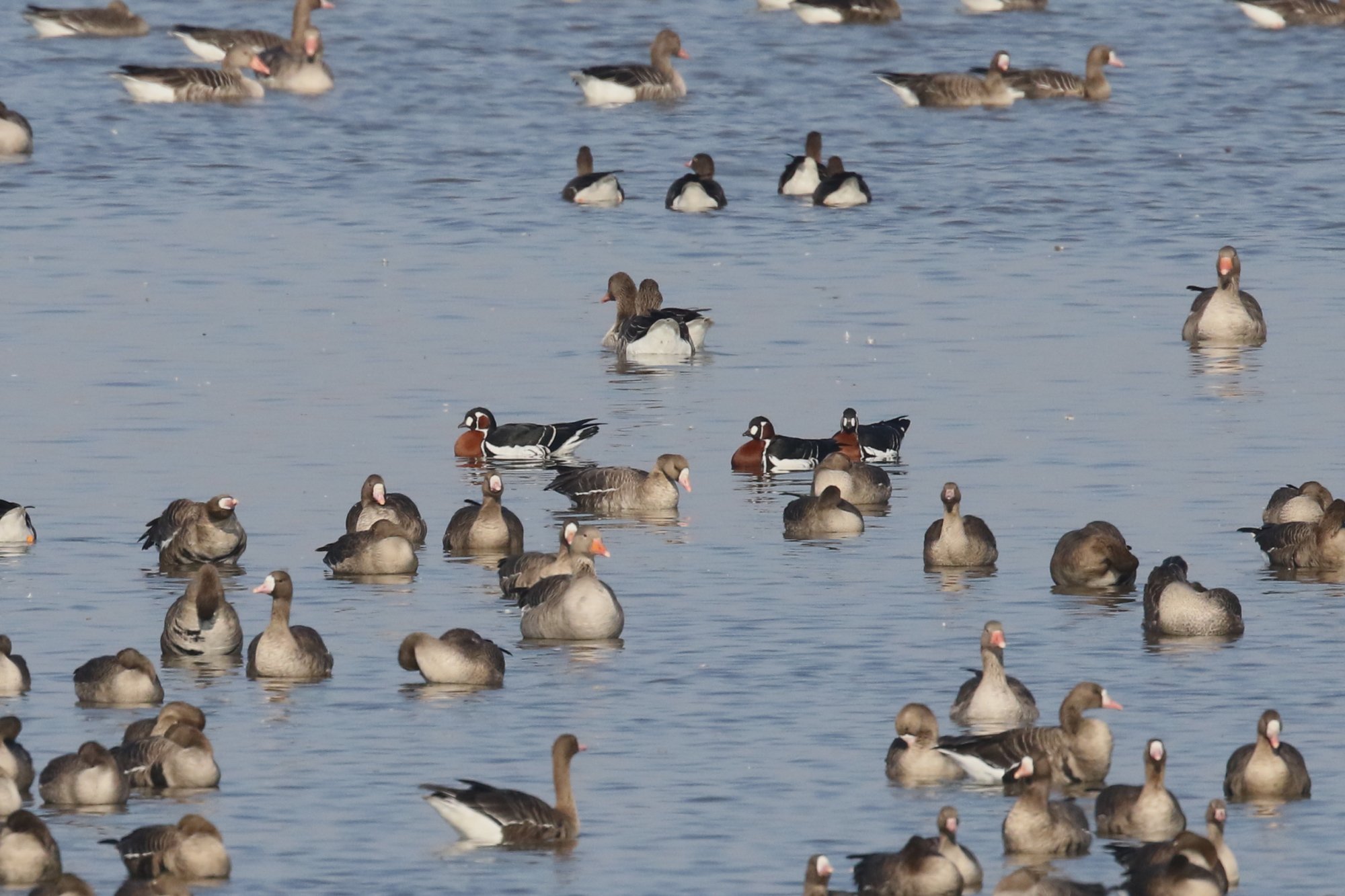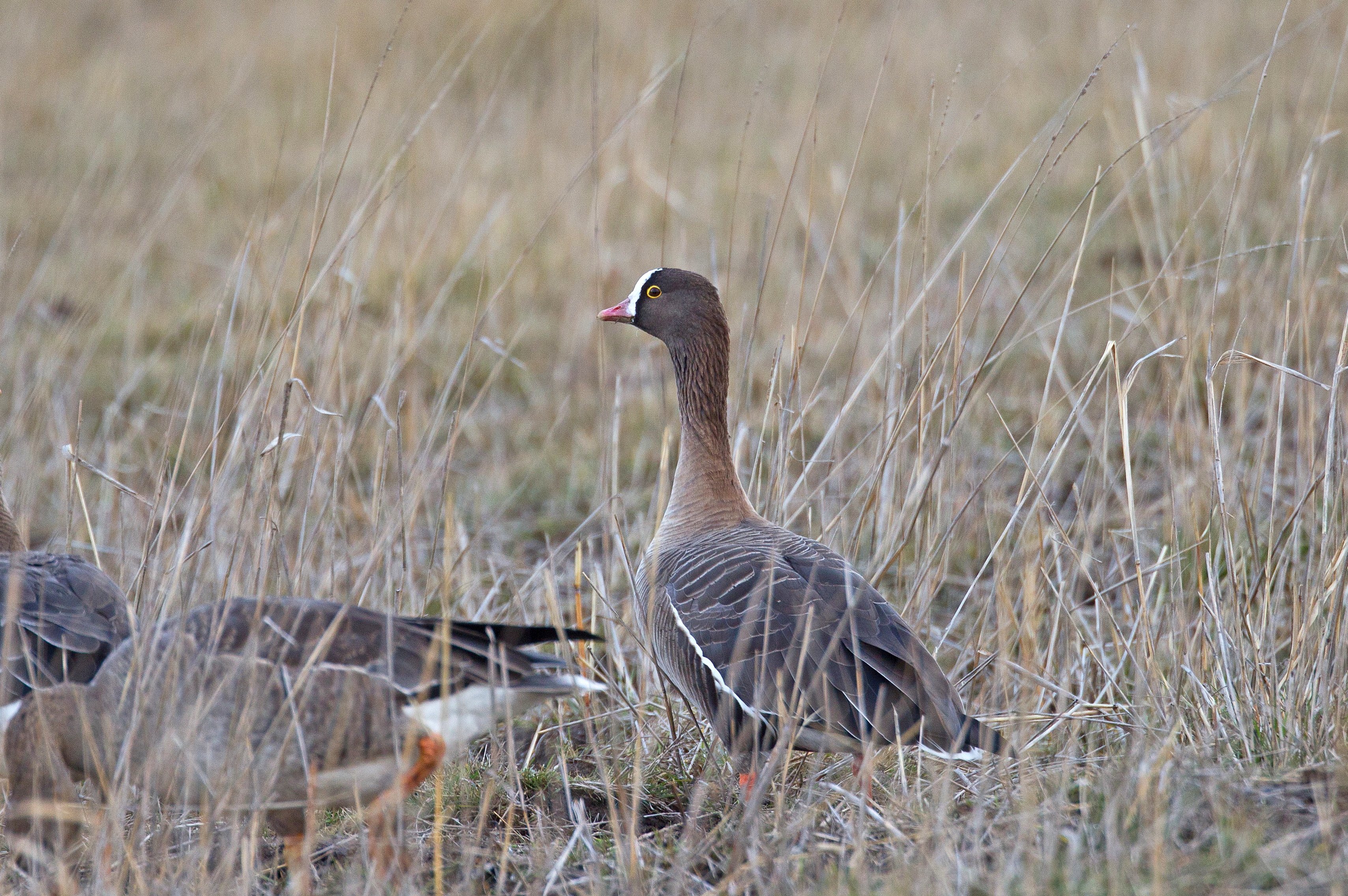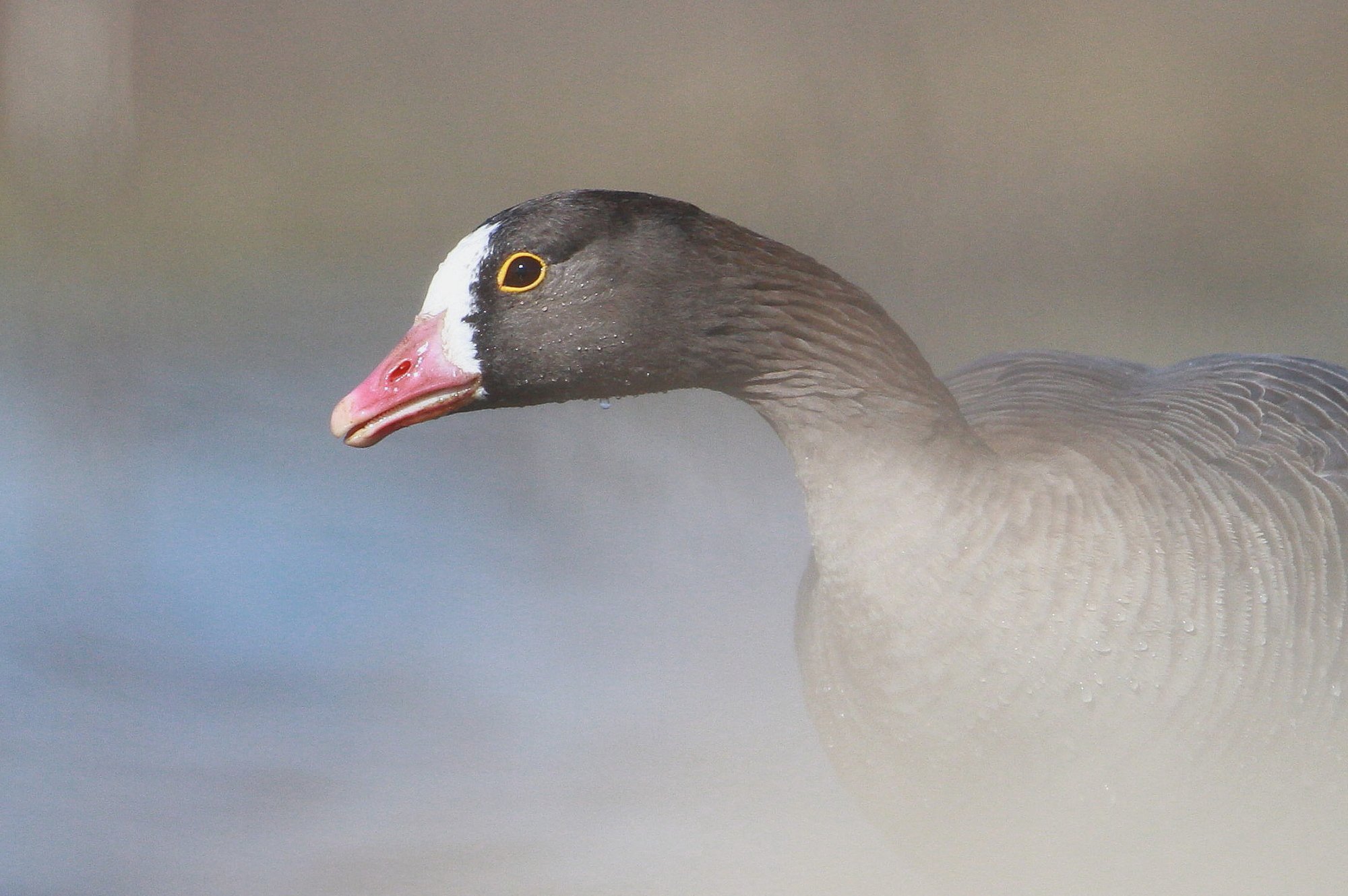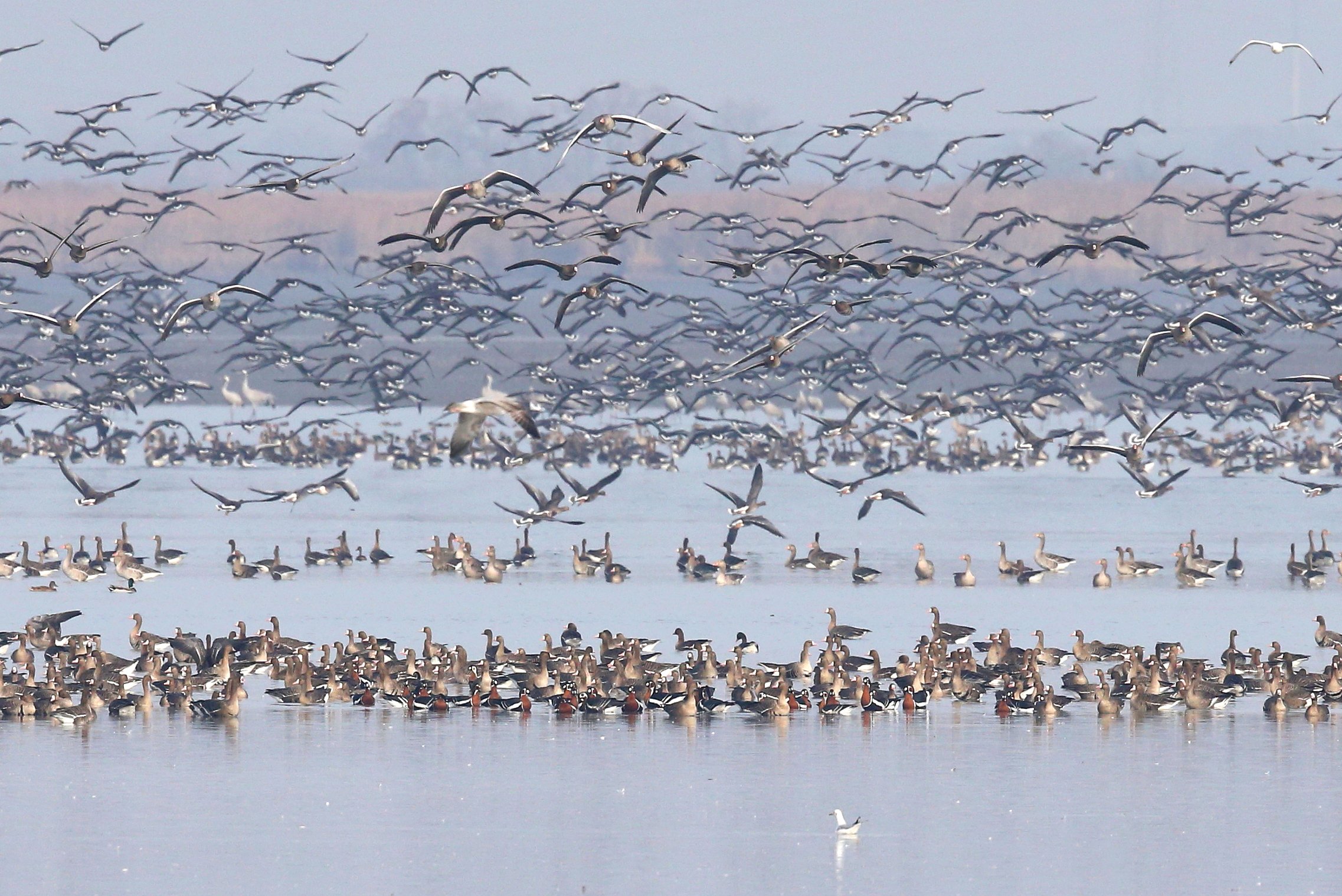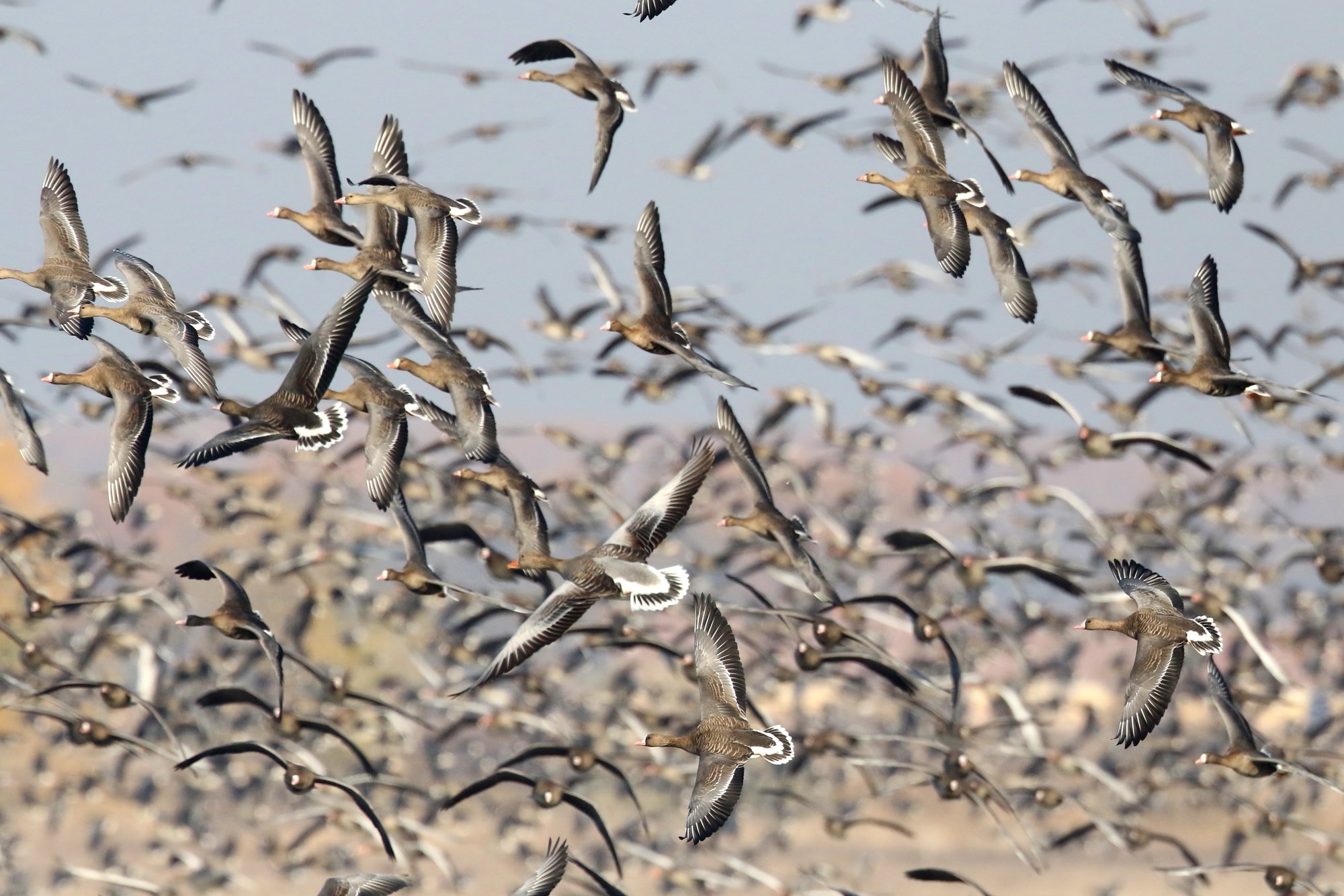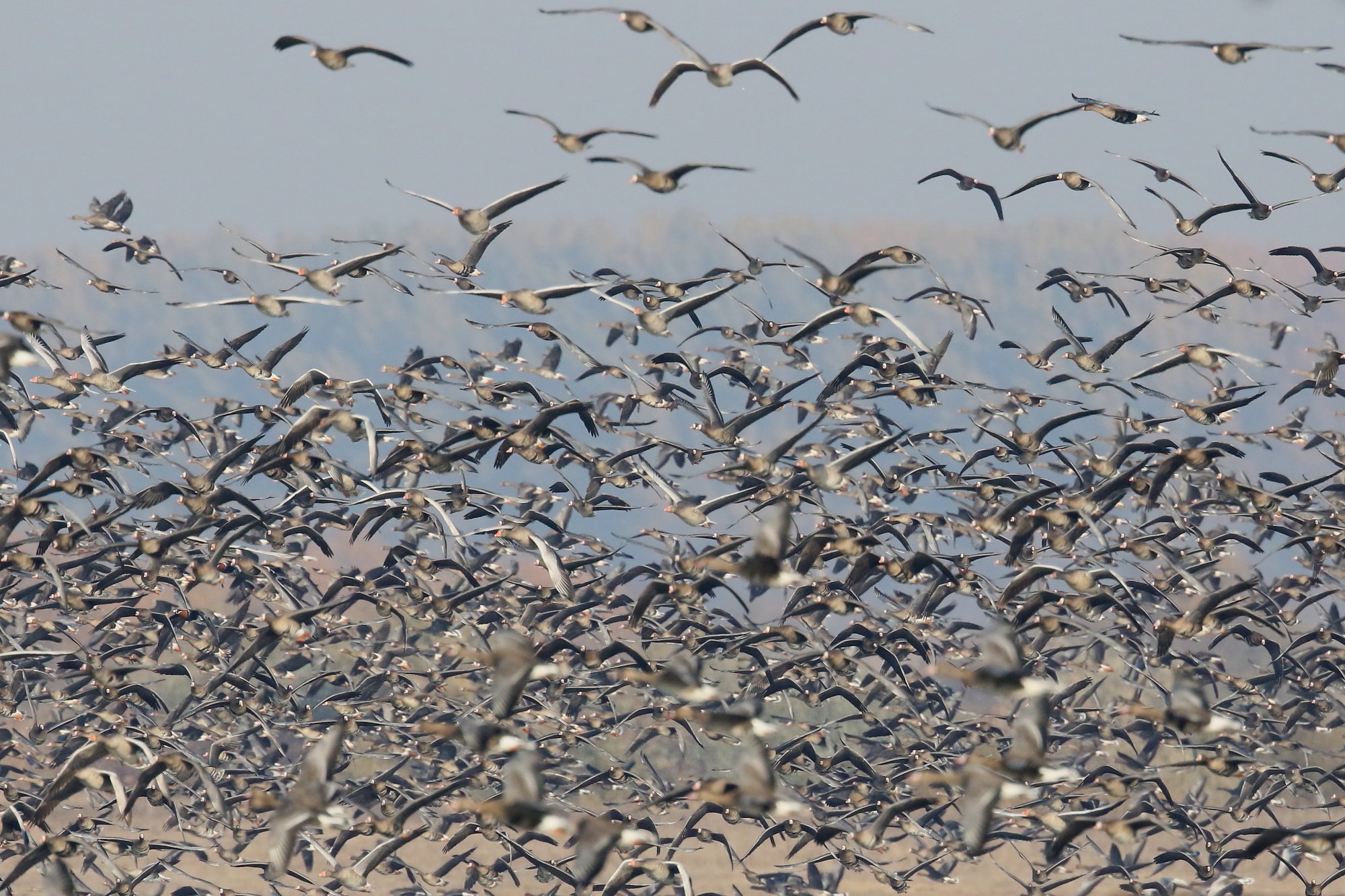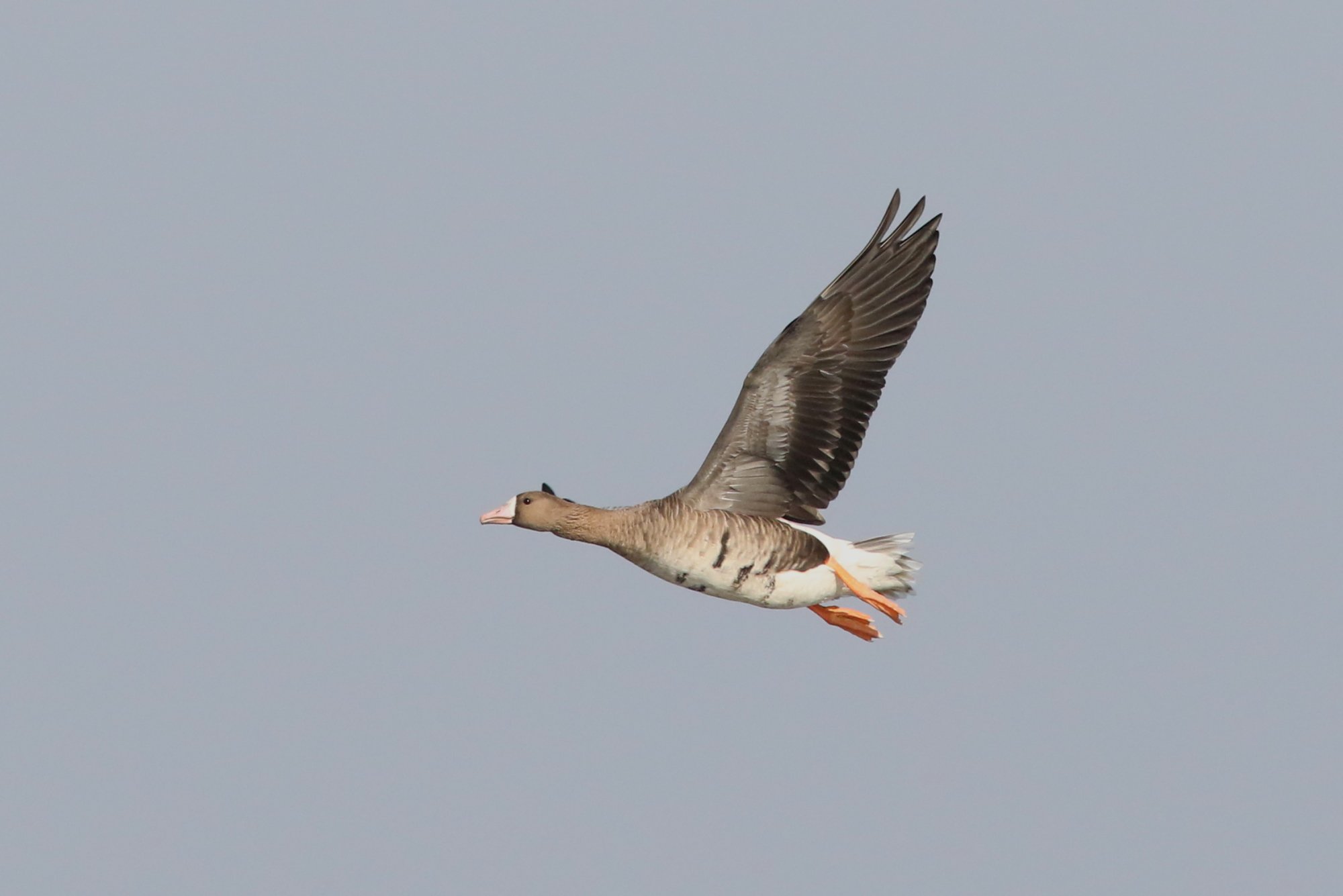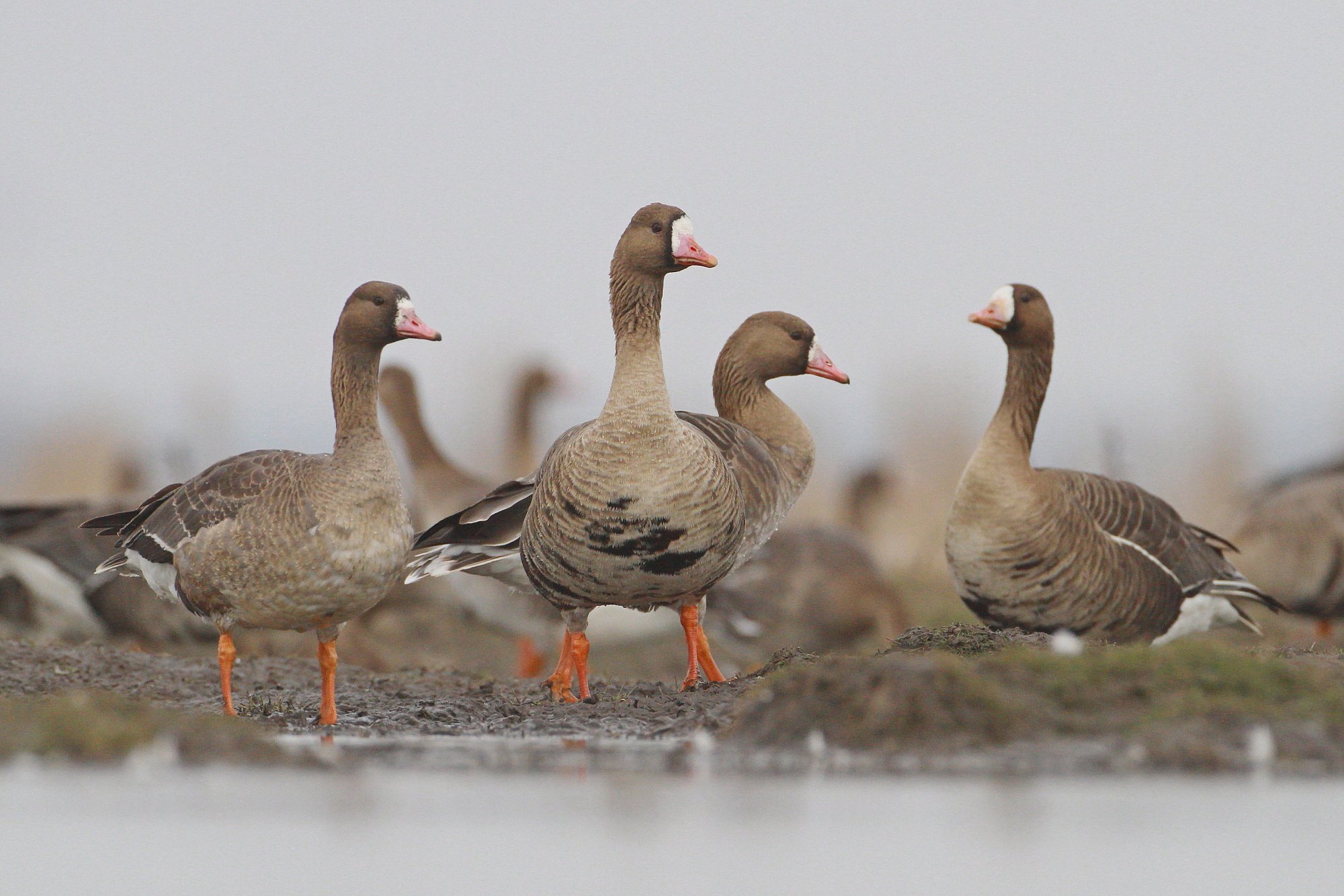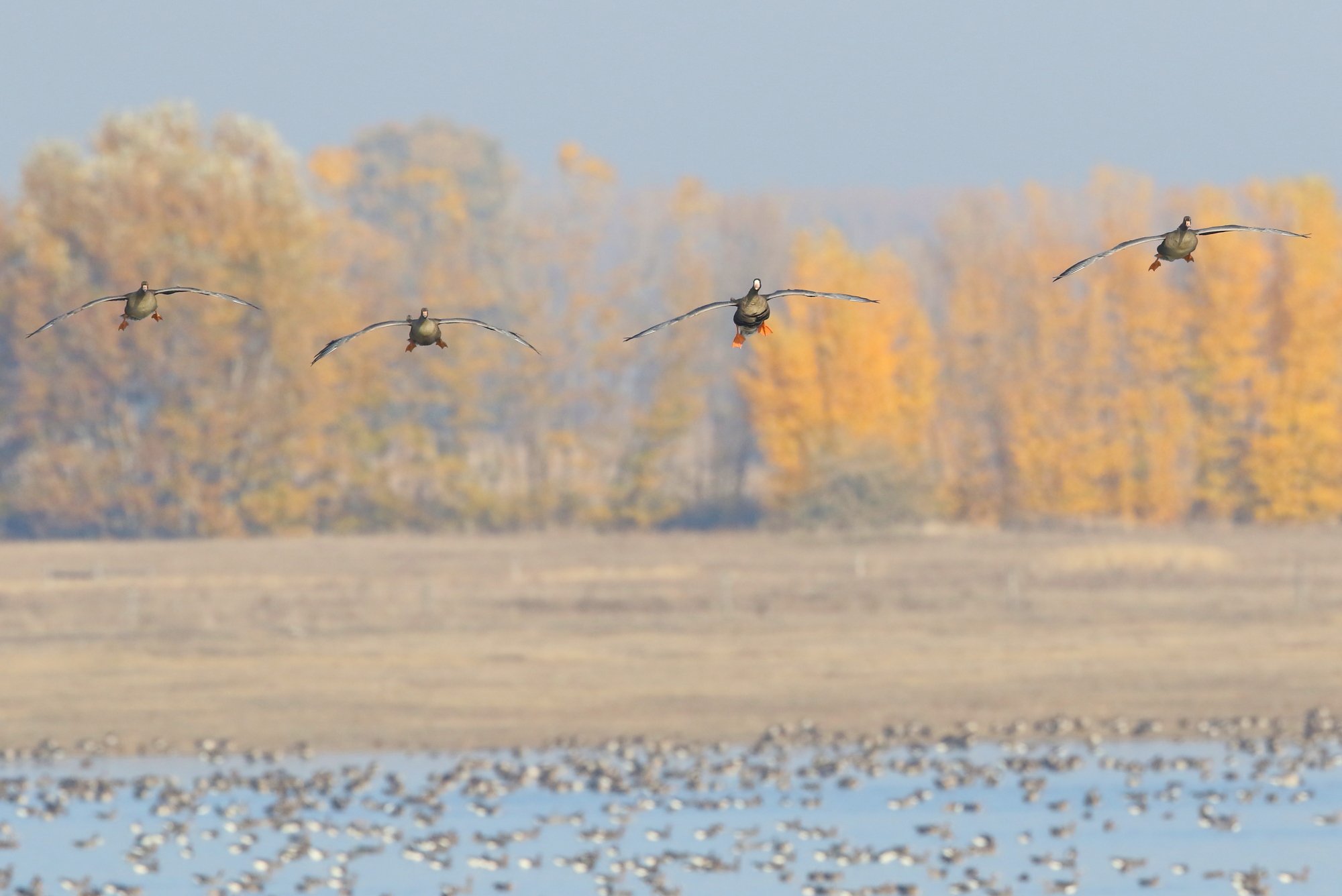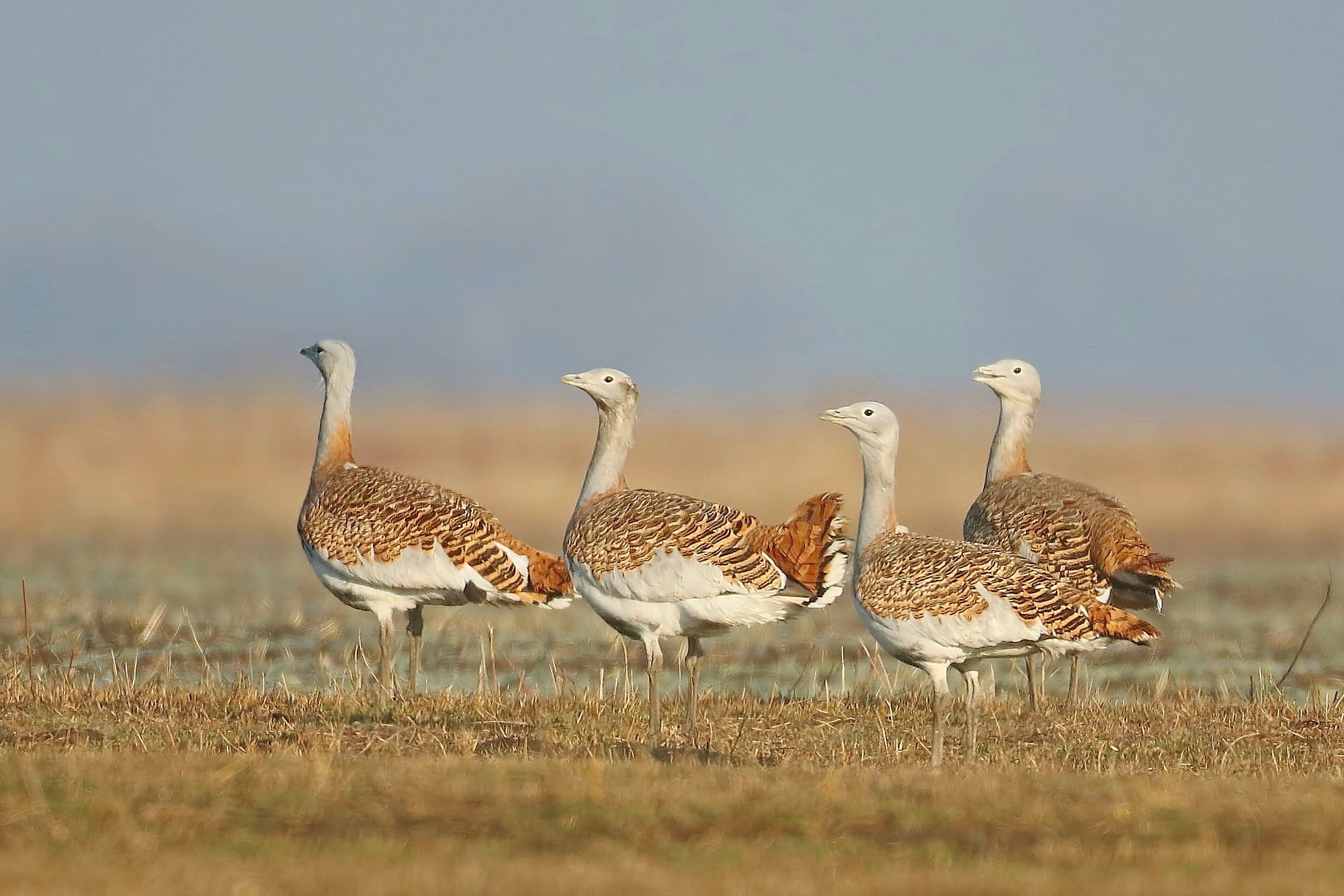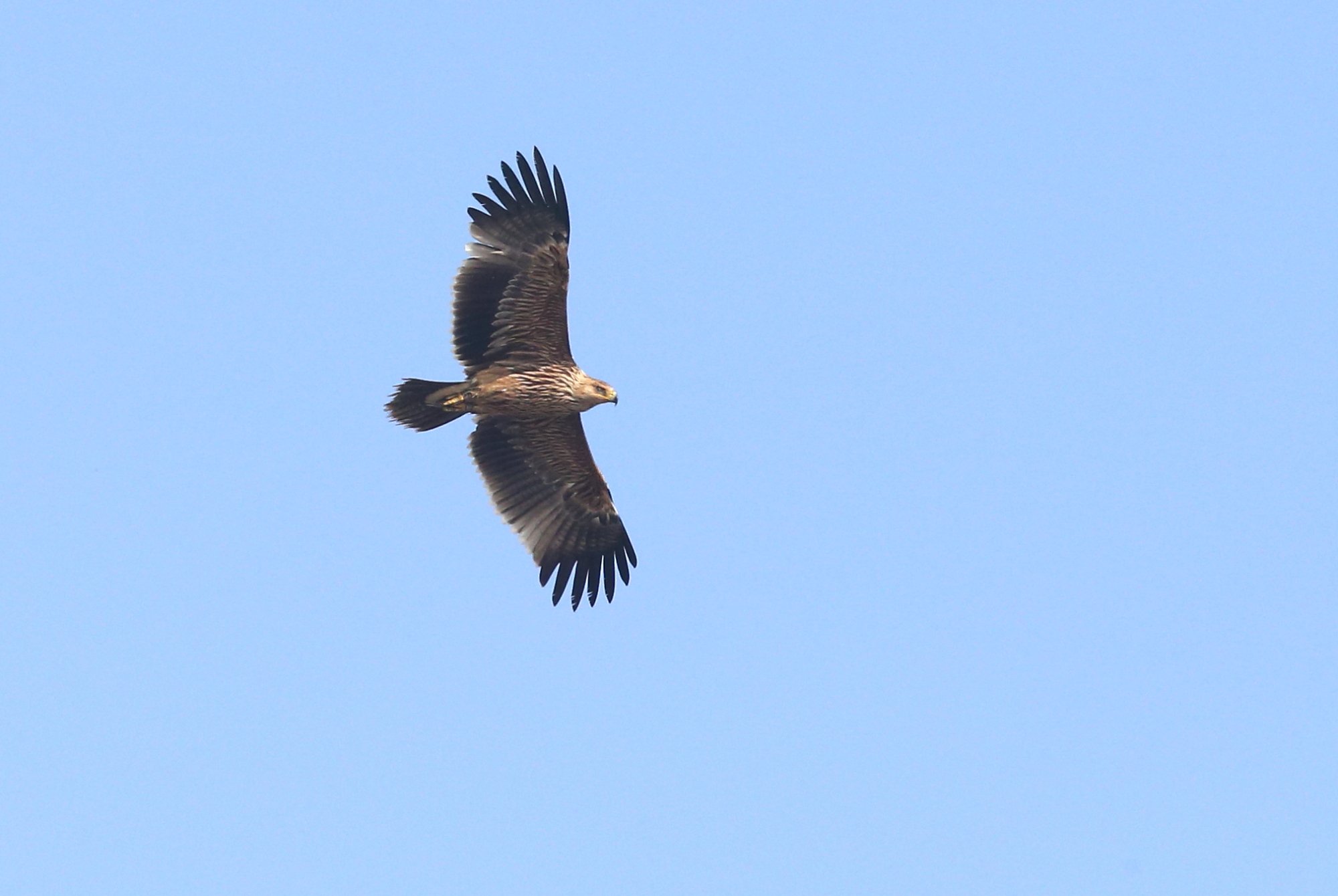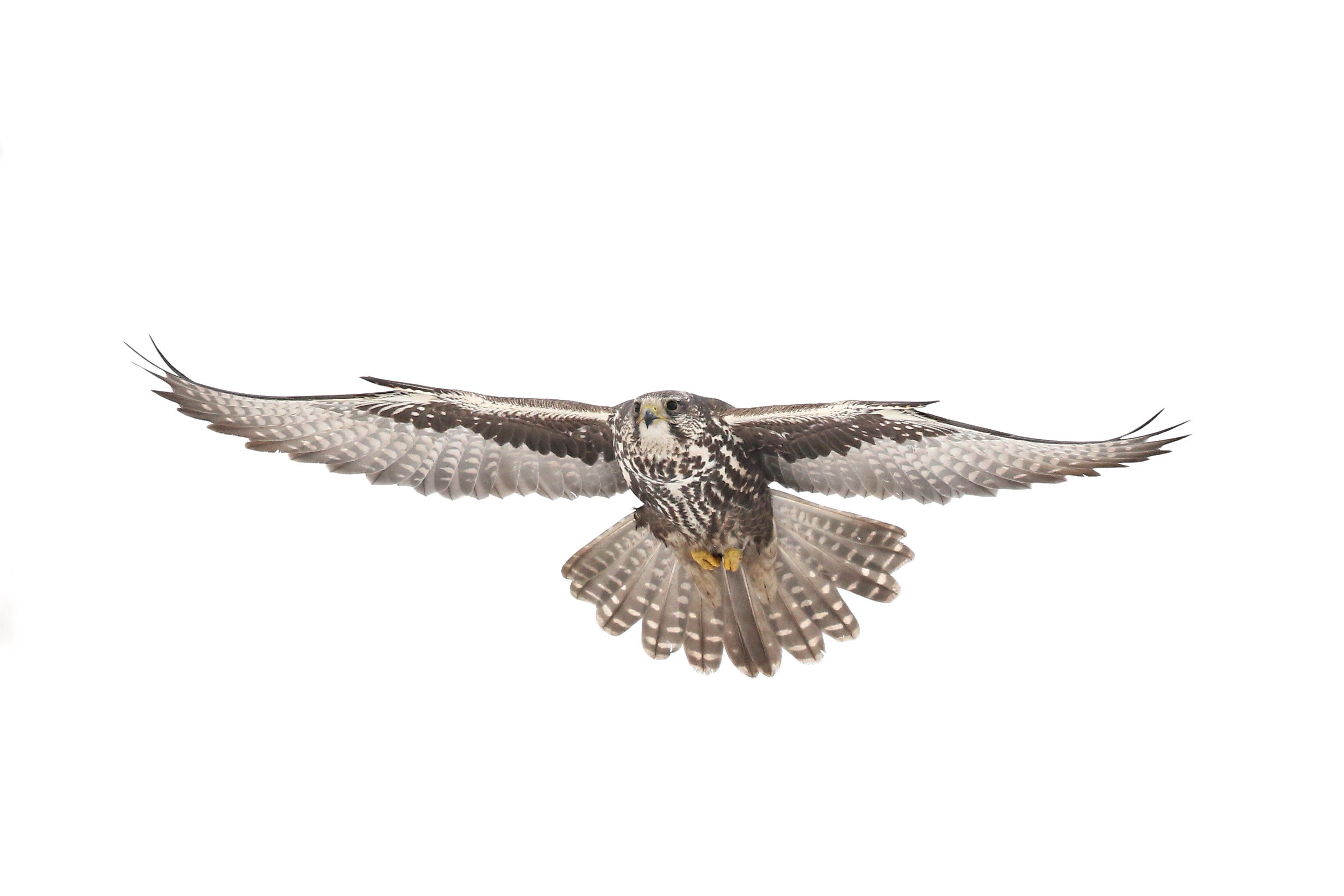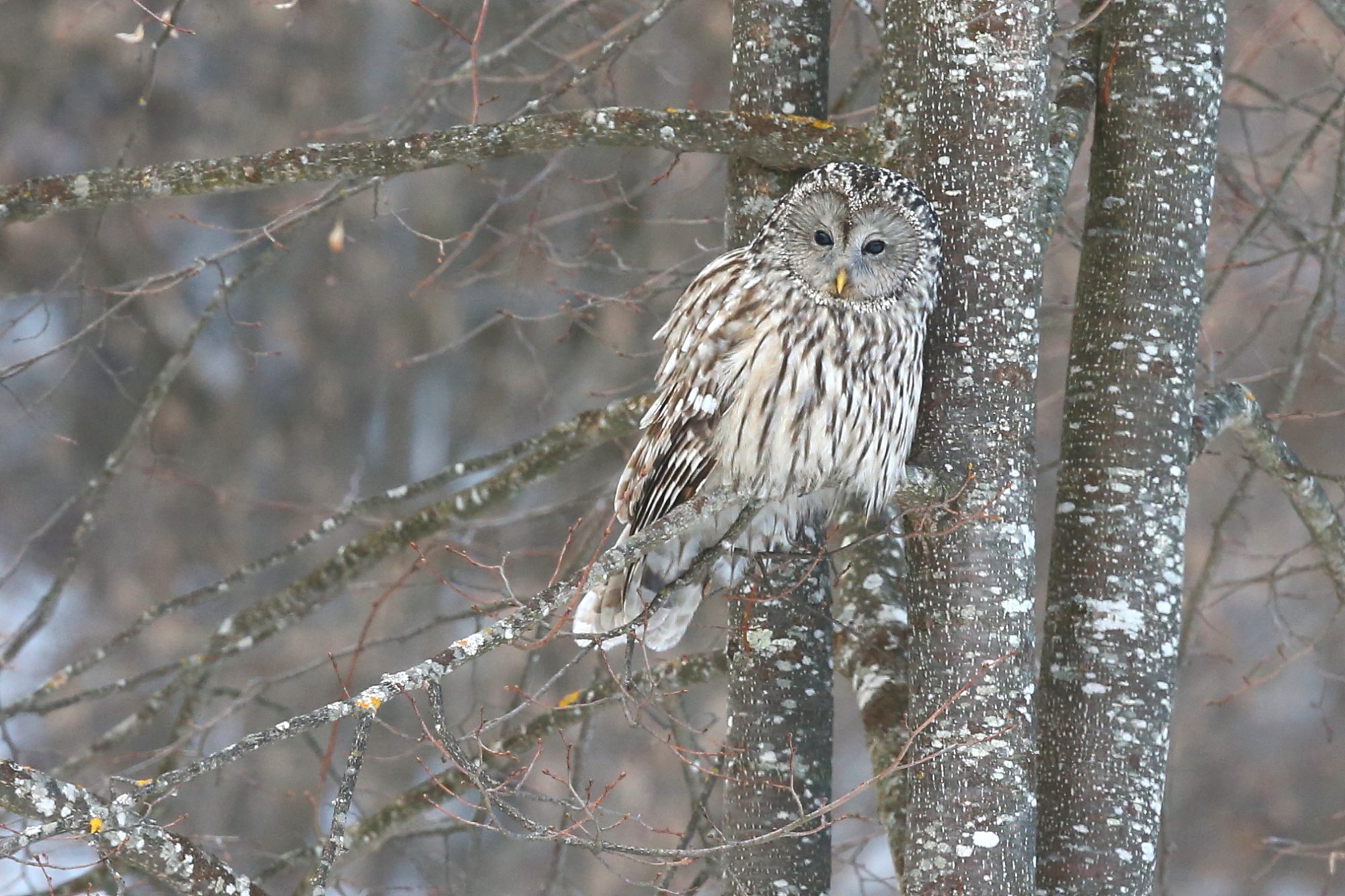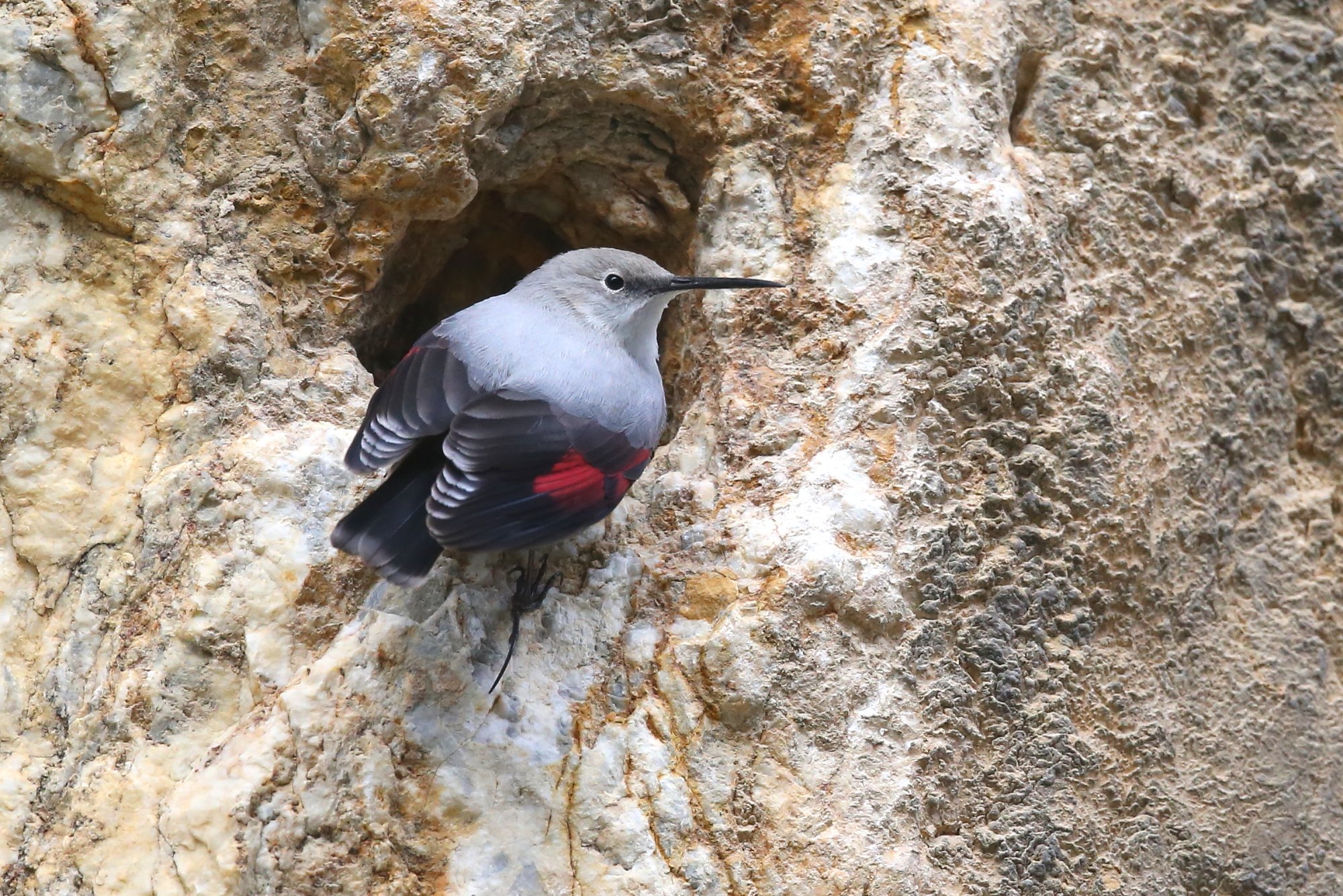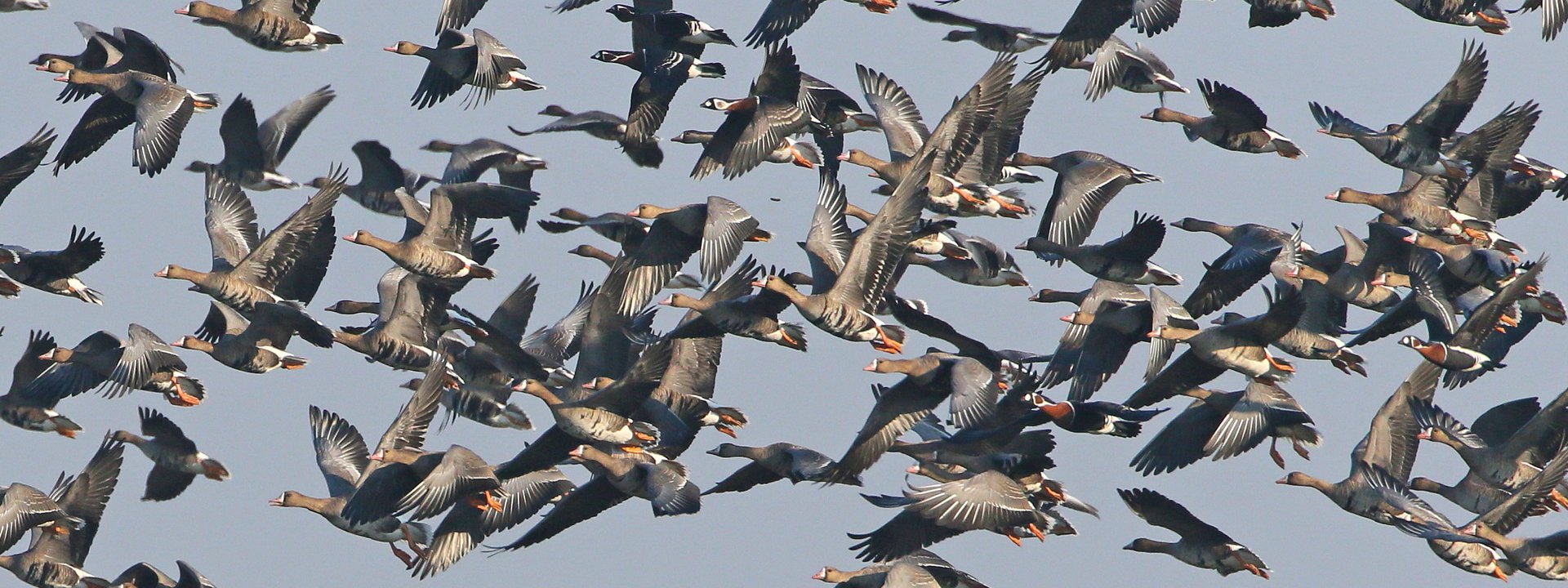Hungary
Red-breasted and Lesser White-fronted Geese and Woodpecker Extravaganza
A 7-day, two-centre, small group birdwatching tour to Hungary in late autumn
Limosa’s November birdwatching tour to Hungary focusses on finding two of Europe’s rarest geese - the beautiful Red-breasted Goose and the endangered Lesser White-fronted, however, there is a lot more to look forward to on this late autumn visit to the country’s celebrated Hortobágy National Park which, for good reasons, is a World Heritage site!
In November, other major targets include Greater Spotted and Eastern Imperial Eagles, Saker Falcon, Great Bustard and the amazing Wallcreeper, plus there should still be thousands of Cranes to enjoy. We should see Long-eared Owls at their daytime roost and go in search of up to eight species of woodpecker, Short-toed Treecreeper and Hawfinch. Join us for what promises to be a superb late autumn birding tour to Hungary!
Tour Dates & Prices
Sun 3rd November 2024
Sat 9th November 2024
- Guaranteed Departure
Tour Cost: 7 Days from £2195 excluding flights
What's Included?
- Expert English-speaking Hungarian bird guide with a Limosa guide joining the tour subject to minimum numbers
- 6 nights accommodation in Hungary with four nights at the excellent Bibic Nature Lodge and two nights in Komlóska
- All main meals and an evening wine tasting
- Minibus transport
- All excursions, local guides, entry fees and permits
- All tour-based tips (drivers, lodge staff) and taxes
- Limosa checklist of birds and mammals
Cost Excludes
International flights, insurance, airport meals/snacks, drinks and items of a personal nature.
Notes
The Land Only Tour Cost is the amount you will pay Limosa.
Despite the end of pandemic restrictions, we have taken the decision to continue to price our holidays as excluding international flights.
To keep the process as simple as possible, we are working very closely with a dedicated agent at Travel Counsellors, Sacha Barbato, who is essentially now our “in house” flight consultant.
Sacha is a highly experienced independent ATOL bonded travel agent, and his contact details are as follows: sacha.barbato@travelcounsellors.com and 01603 360099
He will be able to advise you which flights we are recommending for each holiday and will be able to book these for you.
This will also sometimes give you the option to travel from a regional airport if you prefer.
Tour Highlights
- A visit to the World Heritage site of Hortobágy National Park which is one of Europe's top birding spots!
- Superb late autumn tour crammed with exceptional winter birds
- Impressive gatherings of geese with a focus on finding the beautiful Red-breasted Goose and the endangered Lesser White-fronted Goose
- White-tailed, Eastern Imperial and Greater Spotted Eagles, Rough-legged Buzzard, Saker, Great Bustard
- 1000s of Common Cranes plus up to eight species of woodpecker
- Daytime visit to winter roost site of Long-eared Owls
- Based at the comfortable Bíbic Nature Lodge with great birding right on its doorstep!
- Expertly led by Limosa’s English speaking guide Gábor Simay and accompanied by Carl Downing subject to minimum numbers
Outline Itinerary
Fly to Budapest and transfer east to the Hortobágy National Park. Night Balmazújváros
Three full days devoted to birding the steppe, wetlands and woods of the Hortobágy National Park. Three further nights Balmazújváros
Drive to the Bükk Hills to look for Wallcreeper and onwards to Zemplén Hills. Night Komlóska
Explore Zemplén Hills looking for up to eight species of woodpeckers, Eastern Imperial Eagle and Ural Owl. Further night Komlóska
Time for some last birding in the Zemplén Hills before we return to Budapest. Fly to UK
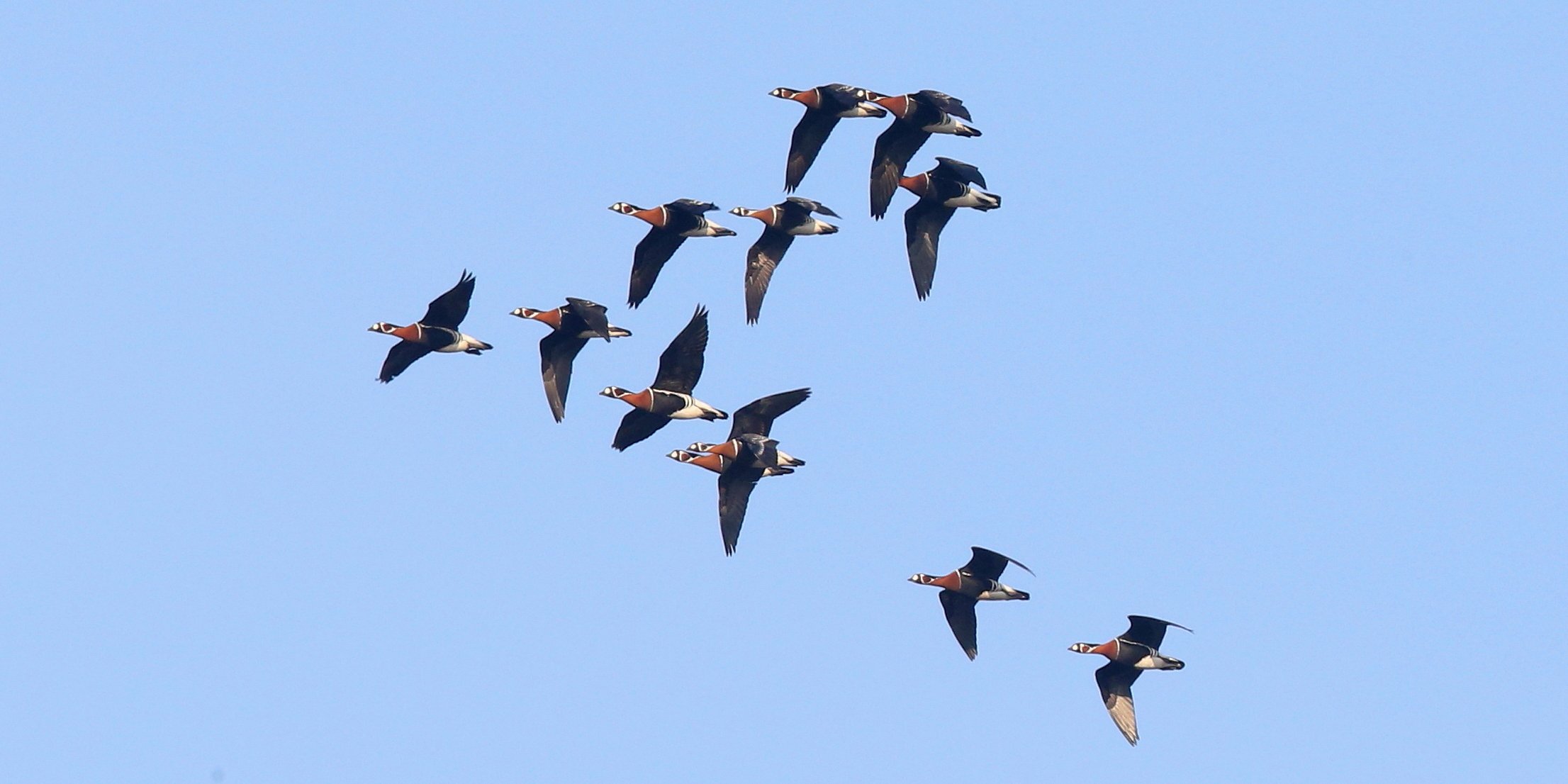
The Hungarian Hortobágy is one of Eastern Europe’s truly great birding areas and is rightly classified as a World Heritage site. Some of the continent’s rarest species make their home here and a late autumn visit is hard to beat as the sweeping steppe grasslands, woodlands and reed-fringed lakes of Hungary’s most famous National Park are a vital staging post for huge numbers of passage migrants and winter visitors, streaming south to escape the onset of the harsh Russian winter further north.
Throughout October and November, the numbers of winter wildfowl continue to build on the plains and for a few short weeks every autumn they are joined by legions of trumpeting Common Cranes, pausing here to rest and ‘refuel’ as they journey south to their winter quarters in Northern Africa.
Also coming from the north are skeins of wild geese. The majority of those arriving will have bred on the vast, open Russian taiga and the largest flocks will be Russian White-fronted Geese, but we should also see Eastern Greylag and Taiga Bean Geese. Best of all, and with the help of our expert local guides and contacts, we will seek out small flocks of immaculate Red-breasted Geese which in November, sometimes number more than 100 birds. With careful scanning, we also hope to find the rare Lesser White-fronted Goose among them. Set against a backdrop glowing red with the last rays of sun, the stirring sight and sound of the goose flocks is an experience never to be forgotten!
The Hortobágy’s extensive grasslands also support significant populations of rodents, notably the squirrel-like European Souslik. These attract numerous birds of prey and November is an excellent month to look for them with Eastern Imperial and Greater Spotted Eagles, Rough-legged Buzzard, Goshawk, Merlin and Saker all being species we hope to find.
The Hortobágy also boasts many fine wetlands where we may see the immense White-tailed Eagle, spreading panic amongst the gatherings of winter wildfowl and often causing them to take flight in huge, swarming flocks. Pygmy Cormorants, Ferruginous Duck, Eurasian Bittern, Great Egret, and Bearded and Penduline Tits are also resident, while for any ‘larophiles’ will want to sort out the Caspian from Yellow-legged Gulls. Much easier to identify (although you need local knowledge to find them) are Long-eared Owls, already gathering in significant numbers at their established winter roosts across the Hortobágy.
On the edge of the steppe, in freshly cut fields of alfalfa, Great Bustards should already be present in post-breeding flocks and with the fields laid bare, late autumn is a great time to look for this large but elusive resident. A November visit also adds chances of seeing Syrian Woodpecker and the solitary Great Grey Shrike along with some of the region’s more unusual wintering passerines. Although their appearance here is somewhat unpredictable, surprisingly, these can include Snow and Lapland Buntings and even Twite.
To round off our stay in eastern Hungary, we will spend two nights in the Bükk and Zemplén Hills where we will go in search of the extraordinary Wallcreeper and could see as many as eight species of woodpeckers including White-backed, Syrian and Grey-headed. Our trip will conclude with an evening wine tasting and dinner at well-known family wine cellar in the Tokaj World Heritage area. Here we can sample the famous Tokaj Wine which King Louis XIV described as 'Vinum Regum Rex Vinorum', in other words the king of wines and the wine of King’s! What could be a better way to end our Hungarian odyssey!
Led by Limosa's English-speaking Hungarian guide Gábor Simay who has worked and studied in the Hortobágy National Park for many years, you will be led by a genuine local expert. The tour will also be accompanied by Limosa's Carl Downing subject to minimum numbers.
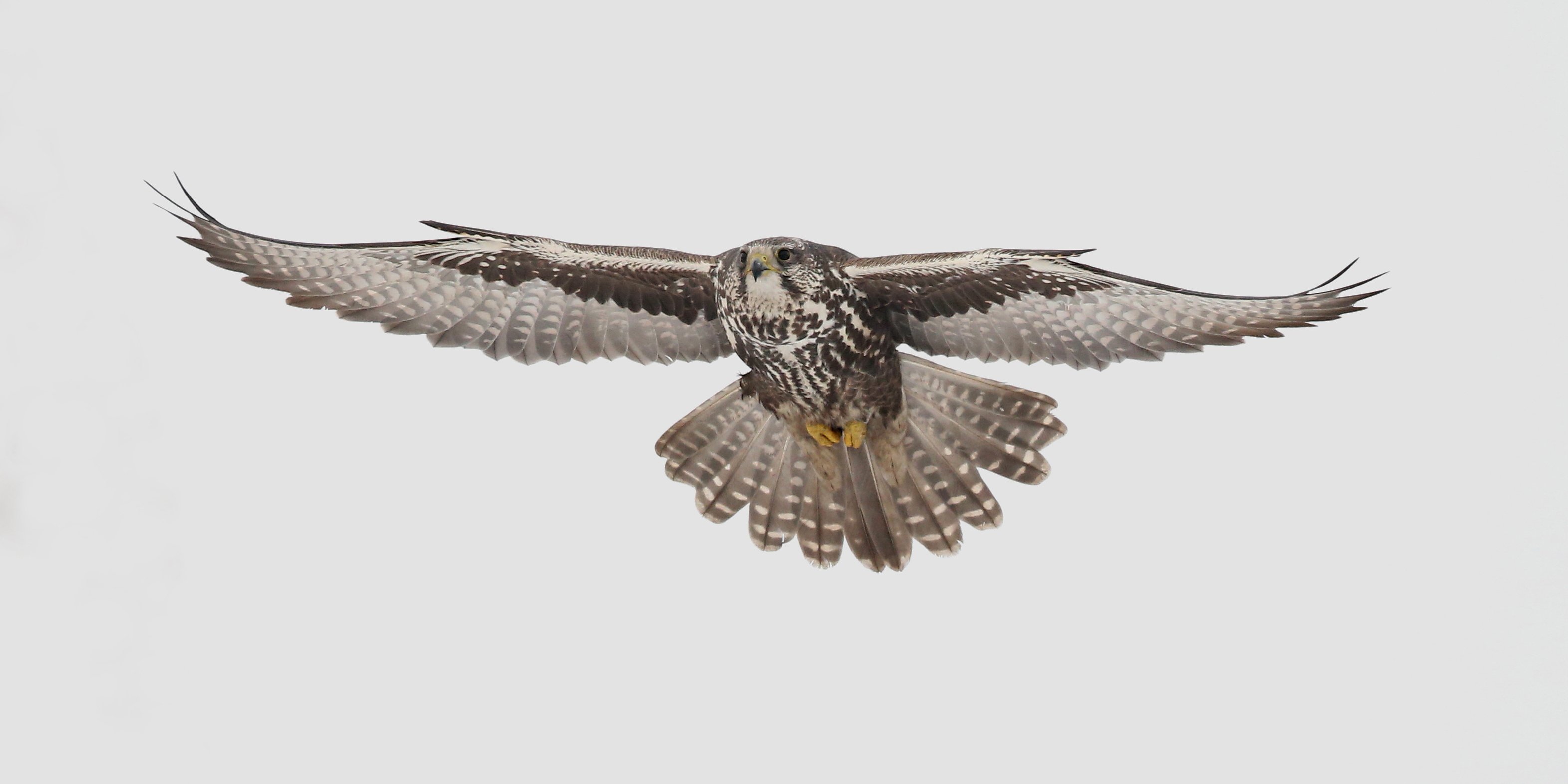
Day 1
FLY TO BUDAPEST AND ON TO THE HORTOBÁGY WORLD HERITAGE SITE
Our November birdwatching tour to Hungary begins with a morning flight to Budapest. We will be met on arrival in the Hungarian capital by our expert English-speaking Hungarian guide Gábor Simay and travel east (a journey of about three hours) to the magnificent Hortobágy National Park.
Our tour spends four nights here, staying at an excellent, new and purpose-built birdwatchers’ lodge overlooking a splendid wetland site near Balmazújváros, at the edge of the National Park. There is no finer base from which to explore the Hortobágy, with its 75,000 hectares of lakes, reedmarsh and woodlands set amidst large swathes of original steppe grassland or puszta. Night Balmazújváros
Days 2 - 4
HORTOBÁGY NATIONAL PARK AND DEBRECEN GREAT WOOD
Every November, throngs of geese descend upon the Hortobágy from their breeding grounds far to the north across Scandinavia and Russia. Many thousands of Russian White-fronts winter here, bringing with them other species, including pink-billed Eastern Greylags, smart Barnacles and Taiga Bean Geese.
However, our attention will soon turn to looking for two very special geese that also come here: the handsome but vulnerable Red-breasted and petite Lesser White-fronted Goose. With its neat pink bill, prominent white forehead blaze and diagnostic yellow 'eye-ring', the latter is one of Europe’s rarest geese and well worth searching for but can be tricky to pick out amongst their larger, more numerous Russian namesakes. Thanks to its bold pattern of black, white and chestnut-red, the Red-breasted Goose is rather more obvious in the field and, in early November, we hope to see flocks of 100 or more. If luck is on our side, we will get some really good views of both these rare species!
The arrival of the geese more or less signals the departure of the Hortobágy’s big autumnal flocks of Common Cranes. Stopping off here in their tens of thousands during October, they depart again in November to complete the long haul south to their winter quarters in Northern Africa. Many thousands should still be about for us to enjoy and we will watch for them at dusk as they gather to roost at a favoured wetland site.
Of major importance in the Hortobágy are the region’s many halastoi or ‘fish ponds’. In reality, these are not really 'ponds' but enormous man-made lakes, broadly hemmed with reed. Here, White-tailed Eagles spread panic amongst the large gatherings of waterbirds, causing the skeins of Eastern Greylags and incoming Russian White-fronted Geese to erupt into the air and clamour noisily across the Hungarian sky.
Great Egrets, Ferruginous Ducks and Pygmy Cormorants are usually about and Marsh Harriers float on upturned wings above the ripening swathes of reed, as we watch for parties of Bearded Reedlings and Penduline Tits foraging in the reeds and willows. For anyone who enjoys an identification challenge, a real delight is watching the large gulls as both Caspian and Yellow-legged should be seen!
Out on the surrounding steppe, Great Bustards gather in small flocks as winter approaches. Moving sedately across the sweeping autumnal fields, these birds can often be easier to spot now than during the lush growth of spring. As we search the steppe for them, we may well come across late autumn migrants such as Great Grey Shrike and Red-throated Pipit, Lapland Bunting or even Twite.
An abundance of the ground squirrel-like European Souslik and other small rodents also makes the puszta one of the best places in Europe at this time of year for birds of prey. In early November, we should see Saker, Hen Harrier and Common Buzzard hunting over the steppe, with good chances of a newly arrived Rough-legged Buzzard and although both are scarce, we will also hope to find Eastern Imperial and Greater Spotted Eagles. We might well come across an ‘exocet’ Merlin chasing down a hapless Meadow Pipit, and perhaps see Goshawk, Peregrine or even something rarer.
November is also a great month to see both Long-eared and Short-eared Owls in the Hortobágy. Our local contacts will check out some favoured Long-eared ‘day roosts’ for us, visits to which have been a major highlight for participants on many previous tours. We will see if we can beat our previous record of 74 birds! Three further nights Balmazújváros
Day 5
BUKK AND ZEMPLEN HILLS
After what should be an amazing time in the Hortobágy, we will reluctantly leave this region and drive to the Bükk Hills where our goal is to track down the butterfly-like Wallcreeper which winters here in small numbers in a number of abandoned quarries. With a modicum of luck we might also come across Alpine Accentor.
Depending on how long our search for Wallcreeper takes, we may have time to visit some local woodlands and start our quest for the region's woodpeckers. We will continue onwards to the Zemplén Hills. Night Komlóska
Day 6
ZEMPLEN HILLS
Our focus today will be on the wooded slopes and valleys of the Zemplén Hills where an incredible eight species of woodpeckers can be found. We have a chance to see Black, Lesser Spotted, Middle Spotted, Great Spotted, White-backed and Grey-headed Woodpeckers in the forests, while Green and Syrian Woodpeckers can be found near the settlements.
We will also look for raptors like Eastern Imperial Eagle and Northern Goshawk and will also hope to find the impressive Ural Owl. This enigmatic large owl is not easy to find but we most definitely have a chance.
As we search for all of these species, we will also be keeping our eyes and ears open for the Dunnock-like note of Short-toed Treecreeper, the snowy-headed eastern form of Long-tailed Tit, and the ‘cherry-stone cracking’ Hawfinch.
Being our final evening in Hungary, after dark we will visit a well-known family wine cellar for dinner where we can sample the famous Tokaj Wine. King Louis XIV, the French 'Sun King', described the Tokaj wine as 'Vinum Regum Rex Vinorum', in other words the king of wines and the wine of King’s and we are sure you will agree !! Further night Komlóska
Day 7
RETURN TO BUDAPEST, FLY TO UK
We should have time for a last look around the Zemplén Hills before returning to Budapest airport for our late afternoon flight back to the UK, where our autumn birdwatching tour to Hungary concludes early this evening.
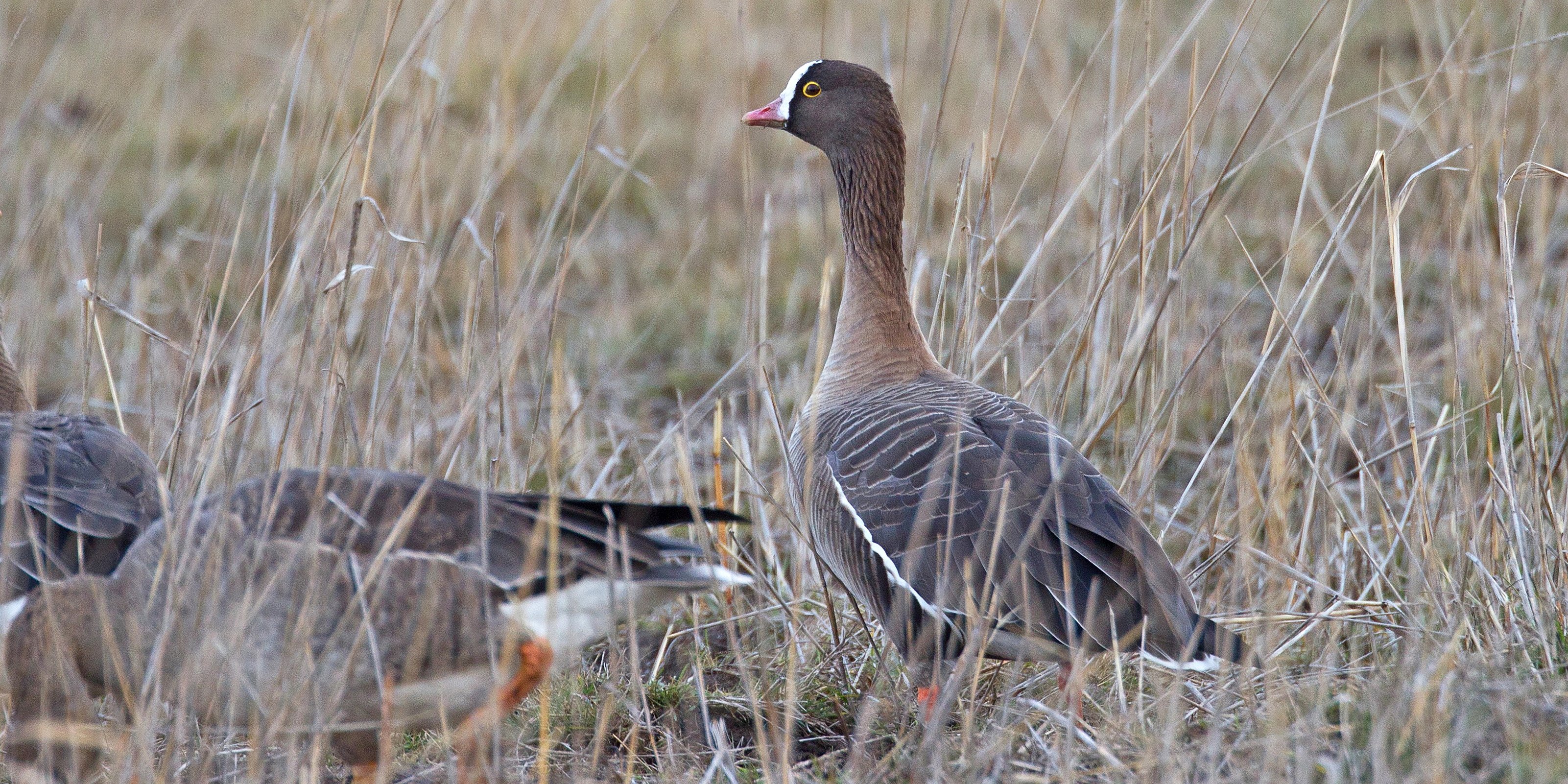
WHAT TO EXPECT
Limosa’s November birdwatching tour to Hungary is centred around finding Europe’s two rarest geese: the beautiful Red-breasted Goose and the endangered Lesser White-fronted.
There is, however, much more to look forward to on this late autumn visit to the country’s celebrated Hortobágy National Park: there should still be thousands of Cranes and other possibilities include Greater Spotted and Eastern Imperial Eagles, Saker Falcon, Rough-legged Buzzard and Great Bustard. We should see Long-eared Owls at their daytime roost and also plan to visit the Bukk and Zemplen Hills in search of woodpeckers, Short-toed Treecreeper and Hawfinch.
Hungary frequently enjoys an ‘Indian Summer’ in autumn, when the weather is often pleasantly warm and sunny. In early November, daytime temperatures in the Hortobágy typically range from 6-10C (43-50F), however, the weather can be as equally variable as in the UK. Some rainfall is possible so pack rainwear and waterproof walking shoes or boots.
BIRDS
100-130 species
ACCOMMODATION
Four nights accommodation in Hungary staying at a comfortable new hotel near Balmazújváros, purpose-built for birdwatchers and overlooking a wetland site on the edge of the Hortobágy National Park with a further two nights at Komlóska.
MEALS
All main meals are included in the tour price, commencing with lunch following our arrival in Hungary on Day 1 and concluding with lunch on Day 7.
Hungarian meals are tasty and substantial. Breakfasts and dinners will be taken at the hotel whilst lunches may be a mix of visits to traditional Hungarian inns (csarda) and tasty picnics in the field.
WALKING
In the Hortobagy, easy walks over flat terrain. Wear waterproof walking shoes or boots.
TRAVEL
Despite the end of pandemic restrictions, we have taken the decision to continue to price our holidays as excluding international flights.
To keep the process as simple as possible, we are working very closely with a dedicated agent at Travel Counsellors, Sacha Barbato, who is essentially now our “in house” flight consultant.
Sacha will be able to advise you which flights we are recommending for each holiday, and he will be able to book these for you.
This will also sometimes give you the option to travel from a regional airport if you prefer.
GROUND TRANSPORT
By minibus.
Tour Gallery
View a gallery of images for this tour below, click on an image to view as full size with caption
